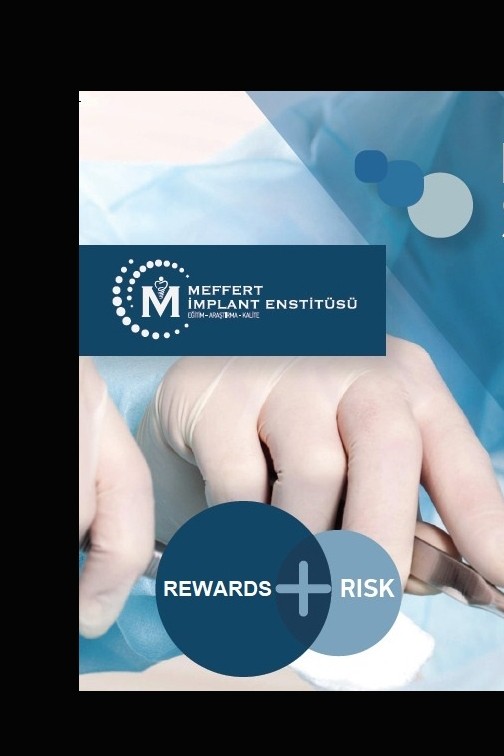Nagehan BAKİ, Nergiz ÇELİK, Cüneyt Asım ARAL, Numan TATAR, Mesut TUZLALI, Numan DEDEOĞLU, Büşra ARIKAN
Estetik Bölgede İmplant Simülasyon Programı Kullanılarak Yerleştirilen Dental İmplantların İmplant ve Abutment Açılarının Değerlendirilmesi
Giriş: Estetik bölgede yerleştirilen dental implantların protetik üst yapılarının planlamasında implant pozisyonu ve yerleştirilme açısı, abutment açısı seçimi yaparken kritik öneme sahiptir. Bu çalışmanın amacı CBCT görüntülüleri üzerinde implant simülasyon programı kullanılarak yerleştirilen dental implantların implant ve abutment açılarını araştırmaktır.
Materyal ve Yöntem: Aralık 2018-Nisan 2019 tarihleri arasında kliniğimize başvuran 326 dental implant hastasının toplam 43 tanesi çalışmamıza dahil edildi. Dental implantlar kanin-kanin arası ve premolar bölgesi olmak üzere iki grup altında incelendi. Toplam 55 tane dental implantın CBCT görüntüleri DICOM formatında incelendi. Straumann® marka implantlar simülasyon programı (Simplant®) ile uygun pozisyonlarda yerleştirildi. İmplant ile komşu dişlerin uzun aksları arasındaki açılar hesaplandı.
Bulgular ve Sonuçlar: Kanin-kanin arası bölgede açılar 11.09 ± 4.05, premolar bölgede ise 9.37 ± 5.55 olarak bulundu. İki grup arasında istatistiksel anlamlı fark bulunmadı (p = 0.508). Kaninler arası yerleştirilen implantların %40’I 0-10 derece, %60’I ise 10-20 derece arasında bulundu. Premolar bölgede ise; %54.5’i 0-10 derece, %38.6’i 10-20 derece, %6.8’i ise 20-22 derece arasında bulundu. Yerleştirilen tüm implantların %53.1’i 0-10 derece, %40,8’i 10-20 derece, %6.1’i ise 20-22 derece arasında bulundu.
Dental implantların İmplant simülasyon programı kullanarak planlanması, protetik rahabilitasyon sırasında stok düz veya açılı abutment kullanılma olasılığını artırmakta ve açıdan dolayı custom abutmenta olan ihtiyacı azaltmaktadır.
Anahtar Kelimeler:
implant simülasyon programı, estetik, implant, abutment
Evaluation of Implant and Abutment Angles of Dental Implants Placed in the Esthetic Region Using the Implant Simulation Program
Objective: Implant position and insertion angle are critically important for the selection of abutment angle in planning prosthetic superstructures of dental implants placed in the aesthetic area. The aim of this study was to investigate the implant and abutment angles of the dental implants placed on the CBCT images using an implant simulation program.
Materials and Methods: A total of 43 out of 326 dental implant patients admitted to our clinic between December 2018 and April 2019 were included in the study. Dental implants were divided into two groups as canine-canine and premolar region. CBCT images of 55 dental implants were examined in DICOM format. Straumann® implants were placed in the appropriate positions using the simulation program (Simplant®). Angles between implants and long axes of the adjacent teeth were calculated.
Results and Conclusion: Angles were 11.09 ± 4.05 in the canine-canine region and 9.37 ± 5.55 in the premolar region. There was no statistically significant difference between the two groups (p = 0.508). 40% of the implants placed between canines were between 0-10 degrees, and 60% were between 10-20 degrees. In the premolar region; 54.5% were between 0-10 degrees, 38.6% were between 10-20 degrees, and 6.8% were between 20-22 degrees. 53.1% of all implants were placed between 0-10 degrees, 40.8% between 10-20 degrees, and 6.1% between 20-22 degrees.
Dental implant planning using the implant simulation program increases the likelihood of using stock straight or angled abutments during prosthetic rehabilitation and reduces the need for custom abutment due to angle.
Keywords:
implant simulation program, esthetic, implant, abutment,
___
- Meffert Implant Instituate, Meffert Implant Instituate,Meffert Implant Instituate
- Başlangıç: 2017
- Yayıncı: Meffert İmplant Enstitüsü
